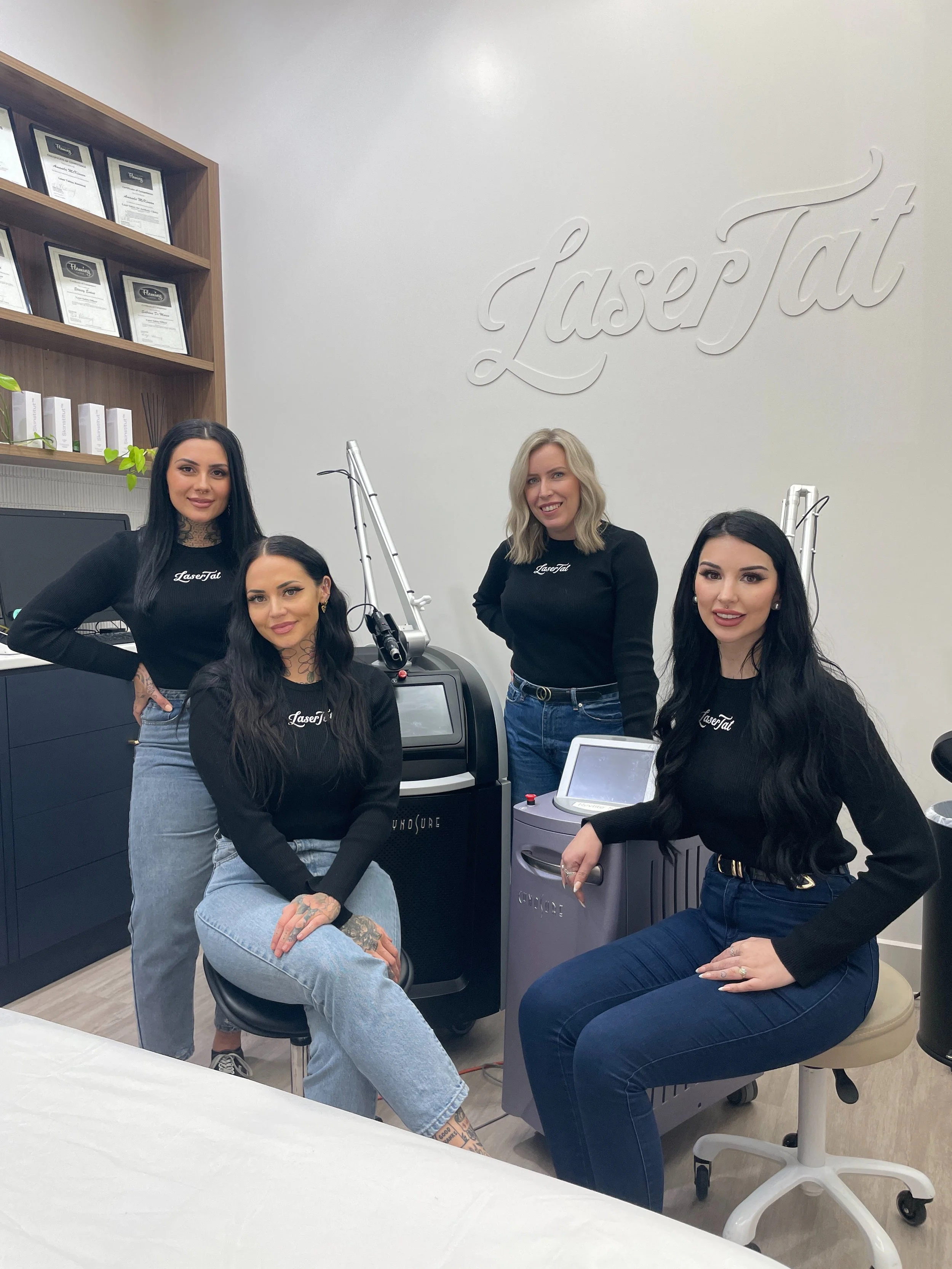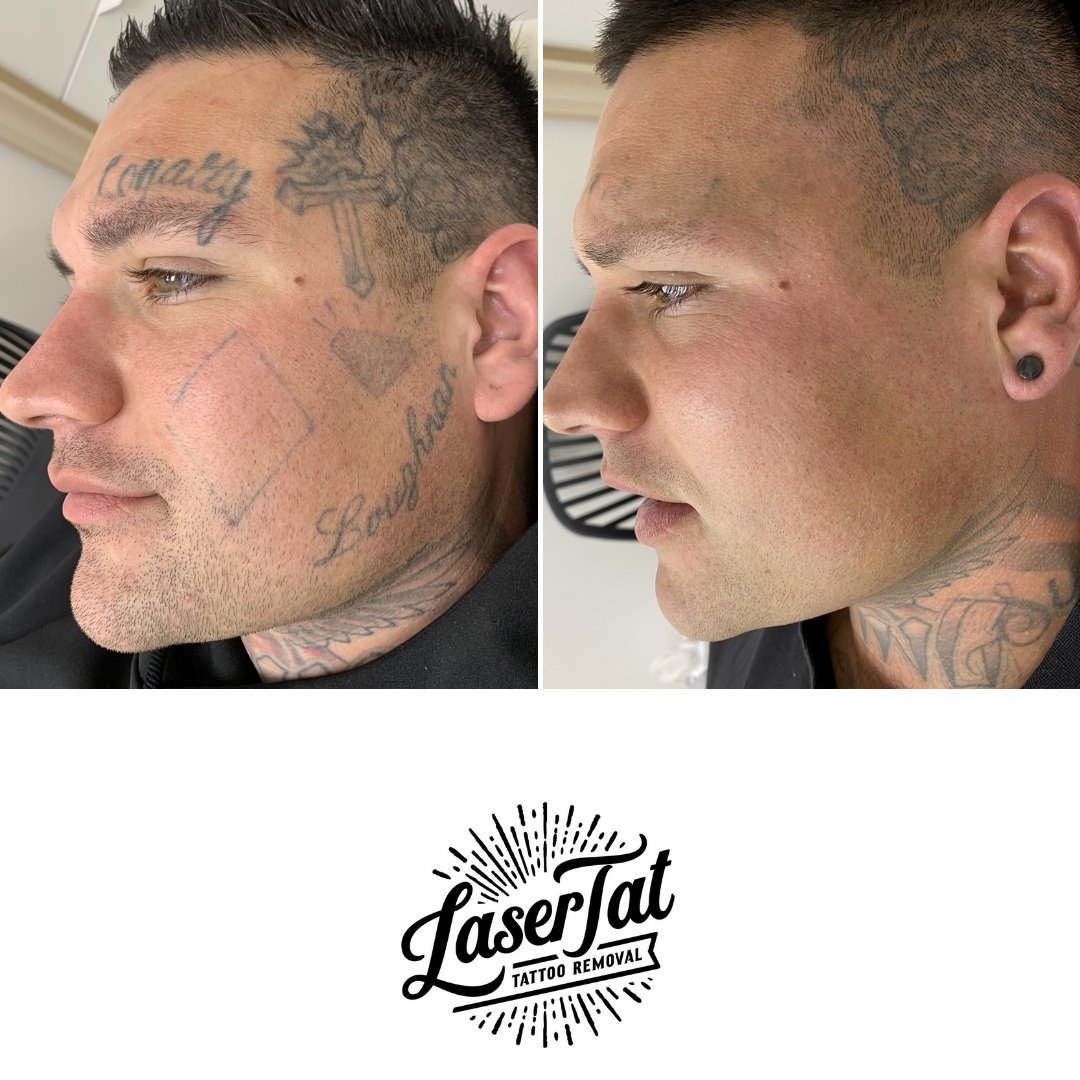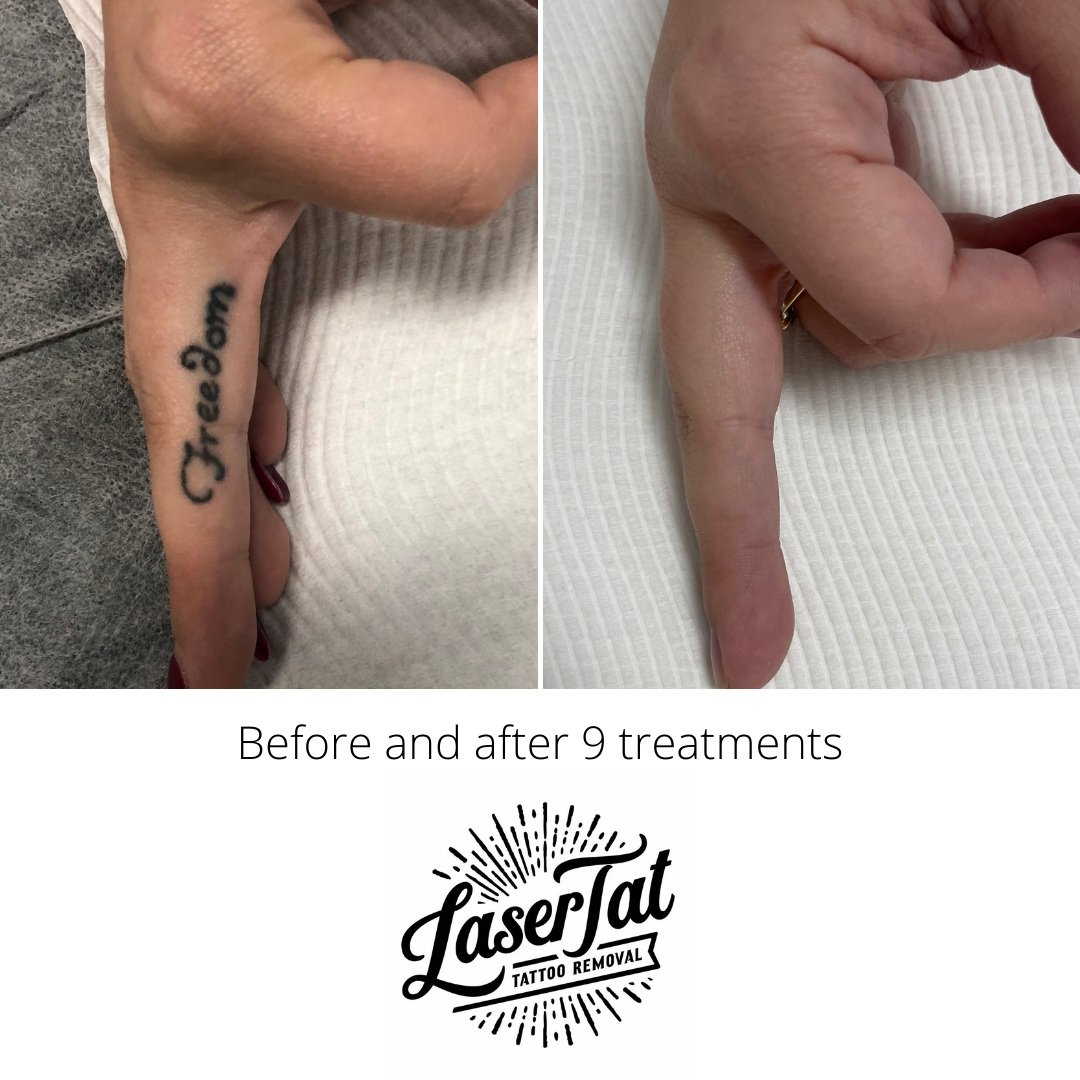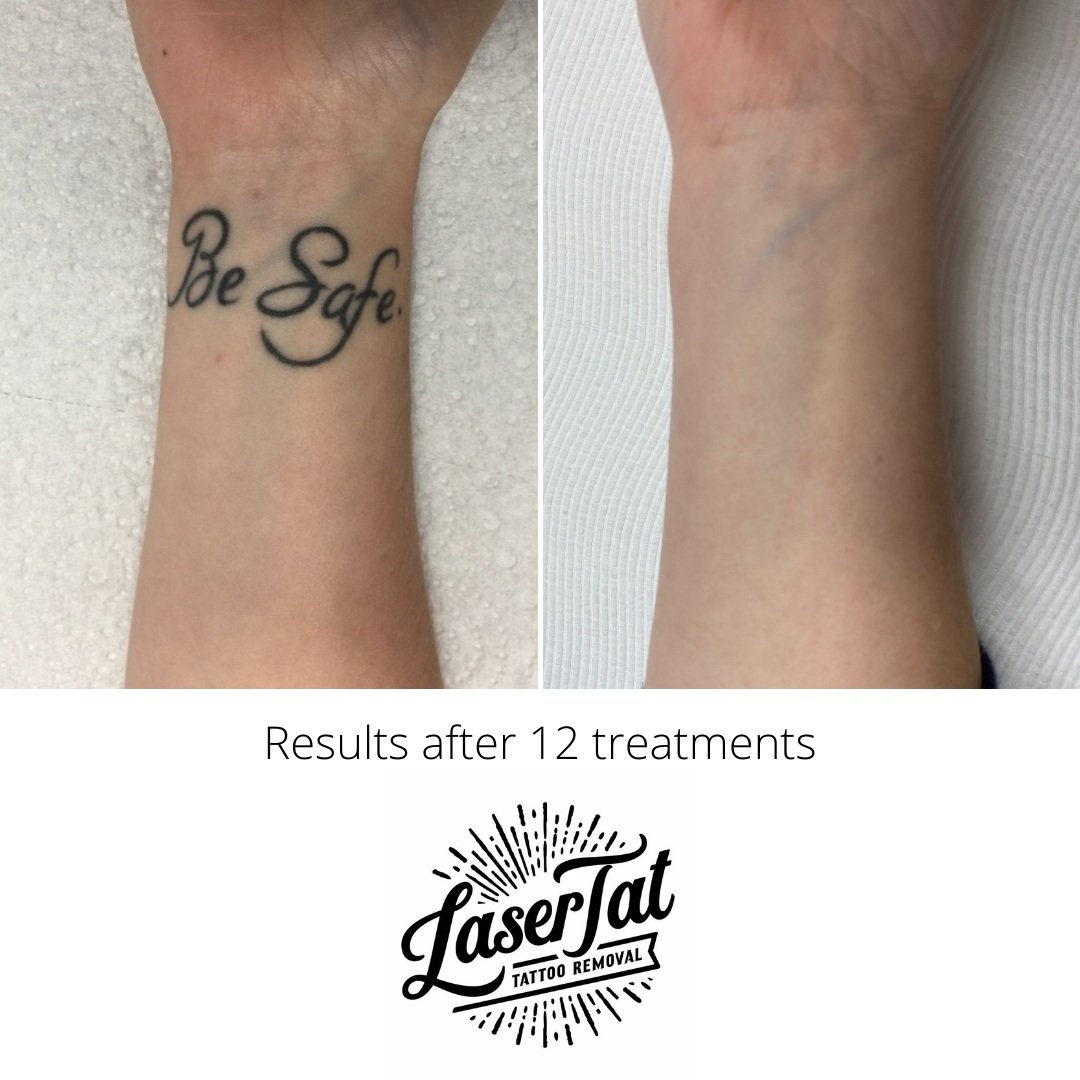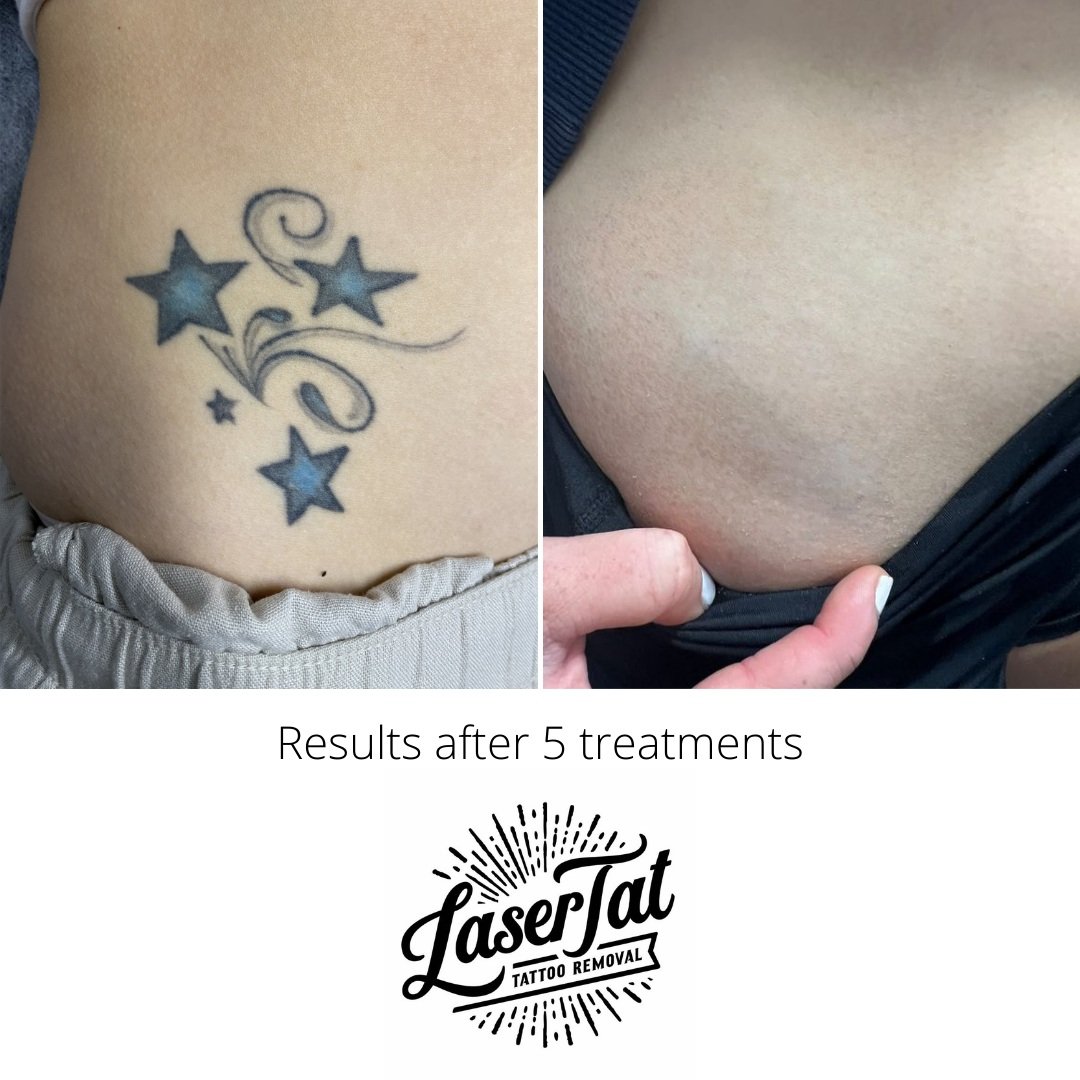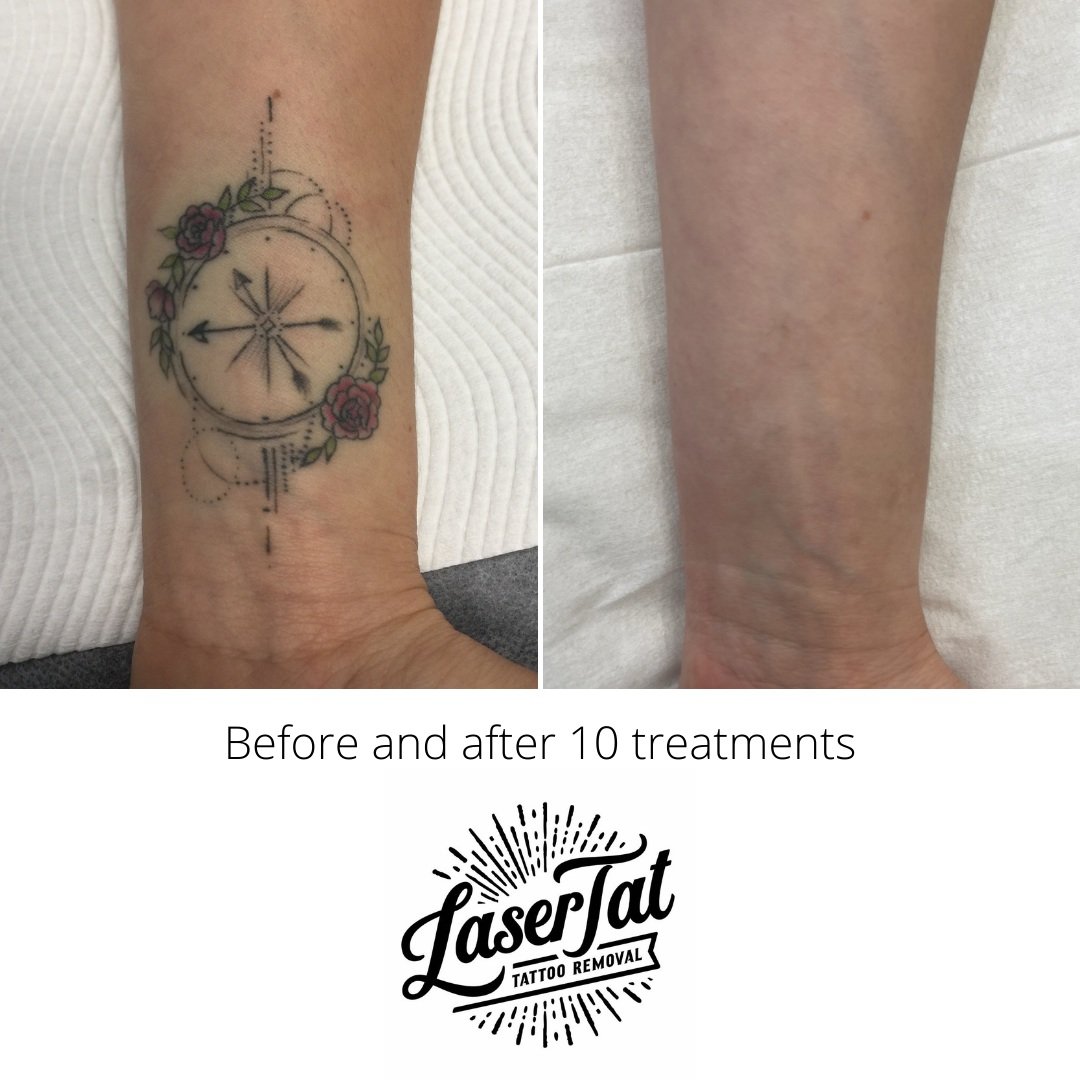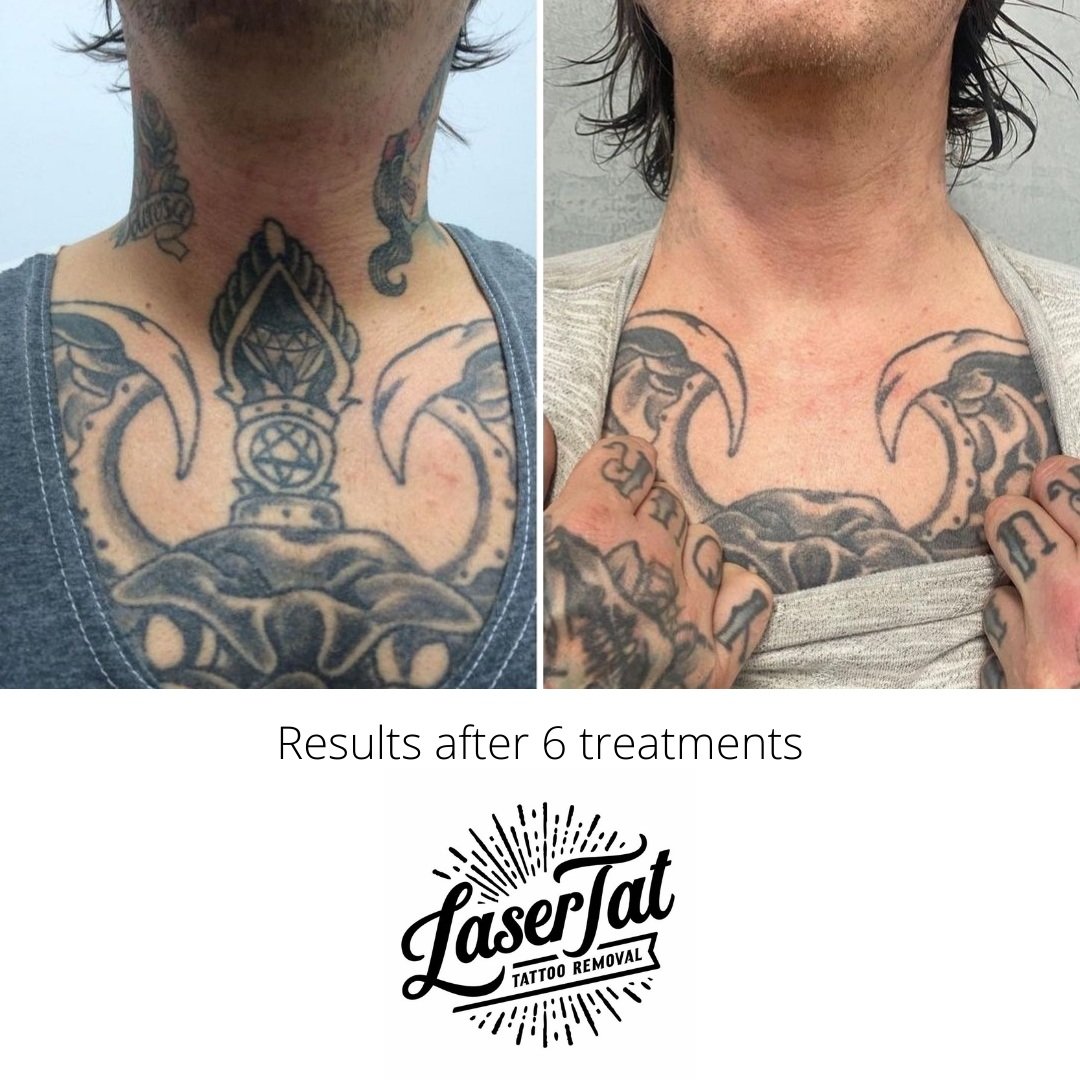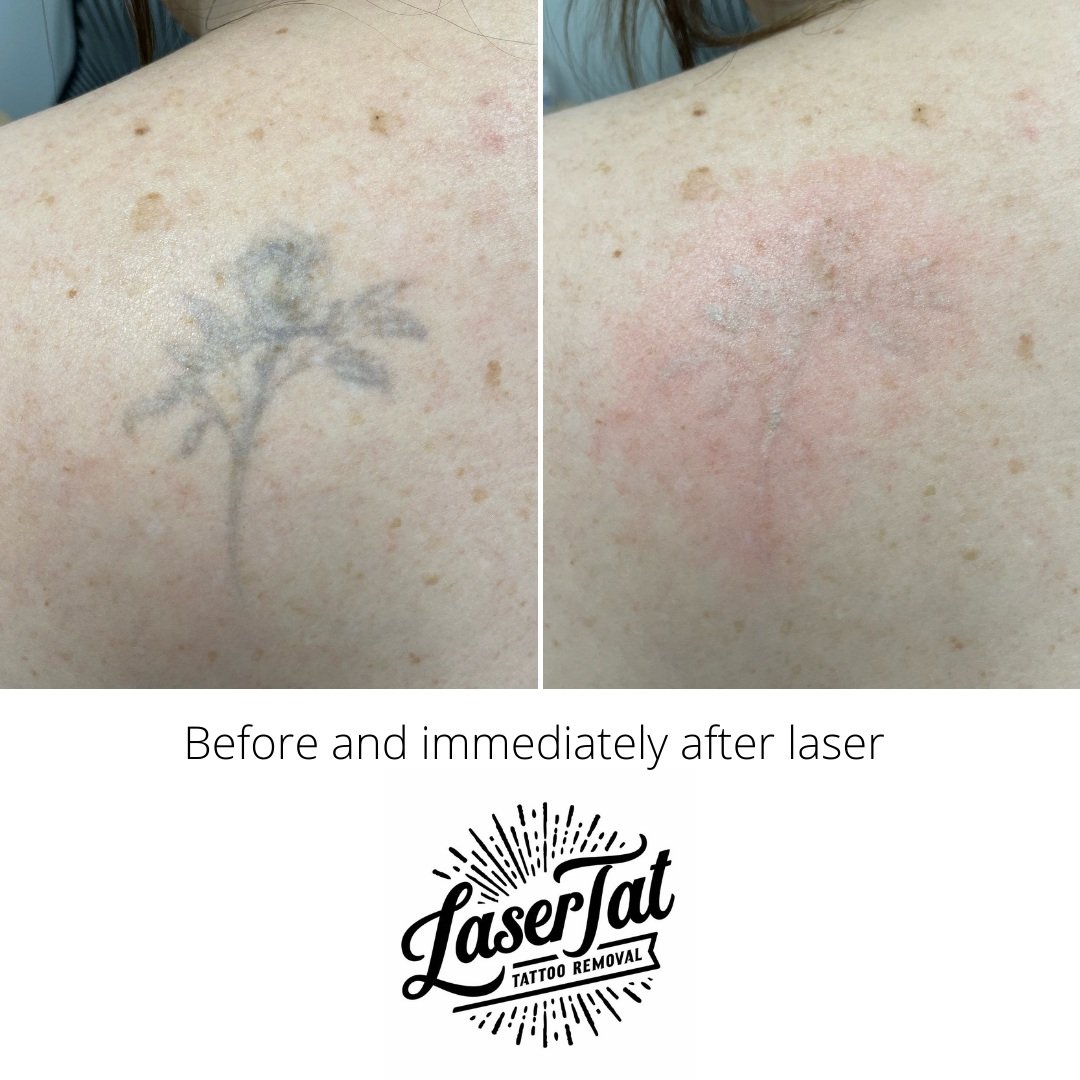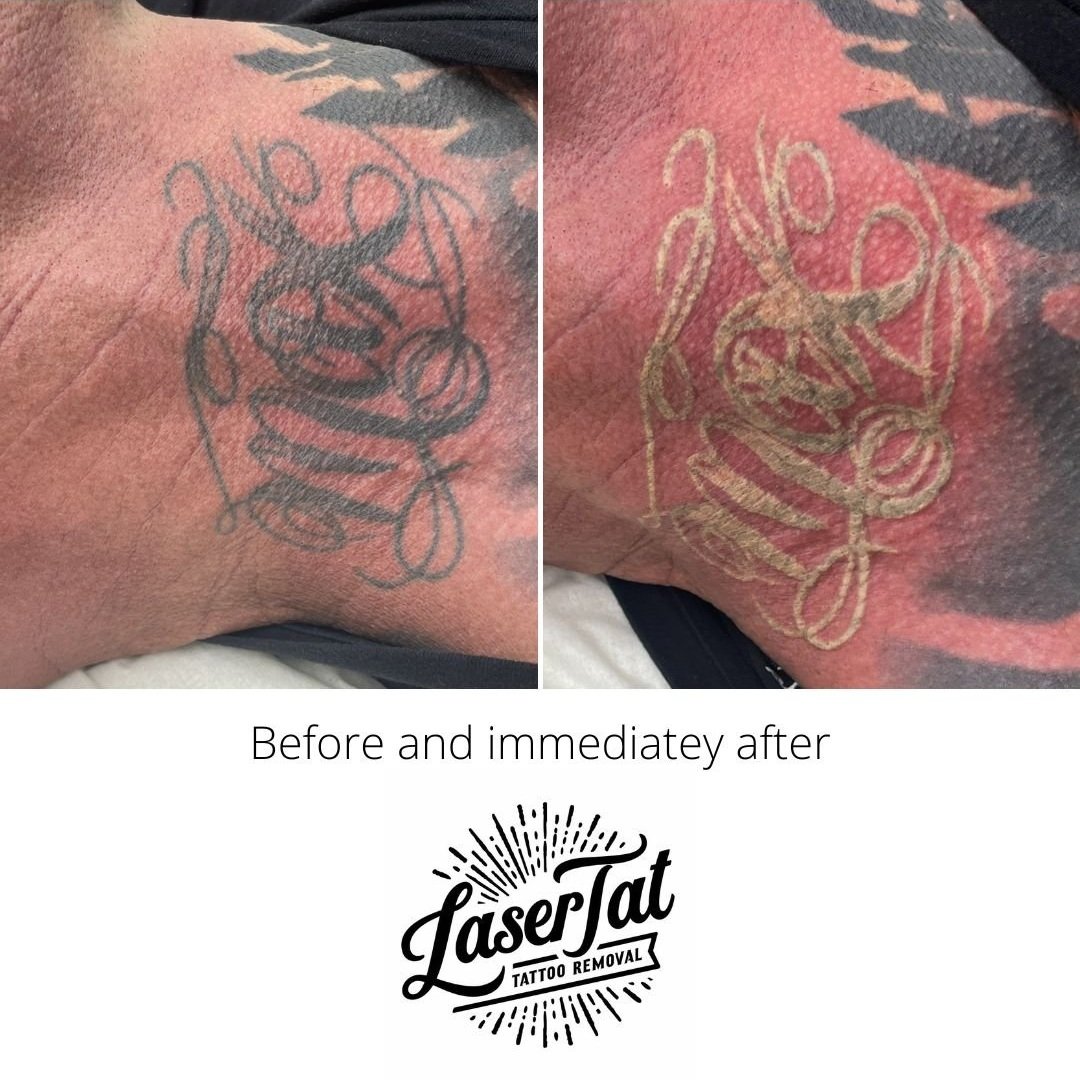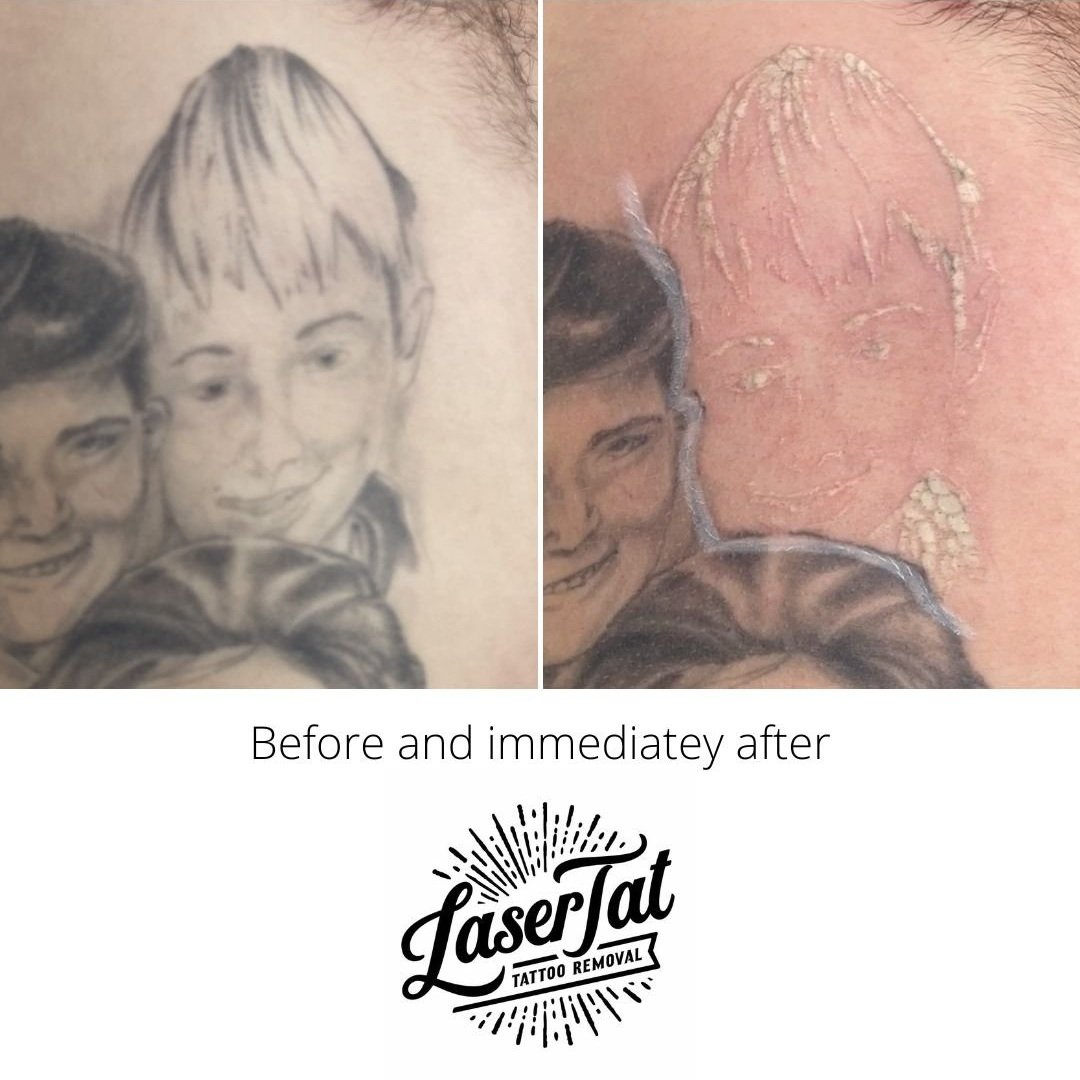Ever wondered if laser tattoo removal is really as painful as they say? Or questioned whether it actually works? You are not alone. With advances in laser technology and treatments becoming more accessible, misconceptions about laser tattoo removal are as rampant as ever.
In this blog, we're cutting through the noise to tackle these commonly held beliefs head-on. Our aim is to provide you with accurate information so you can make informed decisions about your tattoo removal journey. Stay tuned as we debunk these myths and shed light on the reality of laser tattoo removal.
Myth #1: Laser will cause scarring
Reality: One of the most common myths surrounding laser tattoo removal is that treatments will cause scarring. While contra-indications such as scarring are possible with any skin treatment, the chances of properly executed laser tattoo removal treatments causing scarring are actually very minimal.
The incidence of scarring is most often dependent on three factors; the first being the level of experience of the technician performing treatment.
Selecting a skilled and experienced business to receive treatment at is crucial for minimizing the chance of scarring. We strongly recommend doing your research before embarking on your laser journey, and verifying the qualifications and track record of the laser technicians providing the treatment. A skilled practitioner will utilise safe and effective laser settings custom to your skin type and tattoo, and should provide personalized aftercare instructions to decrease the risk of scarring.
Secondly, the technology utilised in laser tattoo removal plays a pivotal role in achieving great results. At LaserTat, we pride ourselves on utilising the cutting-edge combination of Cynosure PicoSure and Q-Switch lasers. The PicoSure laser operates at ultra-short picosecond pulses, effectively targeting tattoo pigments while minimising damage to surrounding tissue. Its precision and speed make it particularly effective for removing stubborn or multi-coloured tattoos safely and effectively. The Q-Switch laser delivers high-intensity nanosecond pulses, ideal for breaking down larger ink particles. Having both technologies at hand allows for tailored treatment plans, with minimal risk of contra-indications, such as scarring.
The third factor which can affect whether a client sees scarring is how strictly they adhere to their recommended aftercare regimen.
It's vital to adhere closely to the aftercare instructions provided by your laser tech. These guidelines usually entail maintaining cleanliness in the treated area, avoiding sun exposure, refraining from picking or scratching the skin, and avoiding activities that could cause irritation. Failure to take your laser provider’s recommendations on board can lead to a rocky healing process, which in turn can result with scarring following treatment. These guidelines are given to our clients as we want to see them have the best result possible!
Myth #2: Laser cannot fully remove tattoos
Reality: At LaserTat, we take pride in utilising cutting-edge PicoSure and Q-Switch technology to offer our clients the most effective tattoo removal services available. Over our years of operation, we have achieved success in completely removing tattoos for our clients. However, there are many of factors which can either help or hinder a person’s success throughout their laser journey.
The process of laser tattoo removal relies on both the body’s immune system and lymphatic pathways to metabolise the ink after it has been treated by the laser. Each client’s physiology will differ and therefore the rate at which each person will see fading, along with the degree at which their tattoo responds can vary. Our laser technicians discuss this during each client’s consultation process at the beginning of their laser journey to ensure we are setting realistic expectations for each and every person who comes through our doors.
Along with the client’s physiological rate of response to treatment, the composition of their tattoo can also play a large part in the level of success they have with a complete removal. Factors such as the tattoo’s size, location on the body, and density and colours of ink can greatly influence that rate at which the client will see a full removal. Typically grey wash tattoos will fade the quickest as the concentration of ink in the skin is less than that of a bold tattoo densely packed with ink.
While we strive to deliver the best end results possible, individual results may vary based on these factors. We remain committed to providing personalized care and guidance to ensure the best possible outcomes for every client who entrusts us with their tattoo removal needs.
Myth #3: Certain colours can’t be removed
Reality: Misconceptions surrounding laser tattoo removal can often lead people to believe that certain colours are impossible to effectively treat. However, even the most stubborn coloured inks can be effectively targeted and faded. At LaserTat, we utilize state-of-the-art PicoSure and Q-Switch lasers, each emitting different wavelengths of light to address a broad spectrum of tattoo colours.
Traditionally, colours like green and blue were deemed challenging to remove due to their resistance to absorbing light energy from standard lasers. However, PicoSure's ultra-short pulses of energy have revolutionised tattoo removal by effectively targeting these stubborn colours. The Picosecond technology allows for precise targeting of ink particles, breaking them down into smaller fragments that the body's immune system can naturally eliminate over time.
Q-Switch lasers, on the other hand, operate at different wavelengths tailored to specific colours, including black, red, and yellow. This versatility enables us to customize treatment plans based on the unique composition of each tattoo, ensuring comprehensive fading regardless of colour complexity.
With the above being said, lighter coloured pigments such as yellow and white can pose challenges during the removal process. These colours are more reflective of laser light, making them stubborn to fade compared to others. The reflective nature of these pigments means that they absorb less energy from the laser, requiring additional sessions and specialized techniques for effective removal. While these more stubborn pigments may require more sessions or specialized techniques, our advanced technology and experience allows us to effectively target and fade even the most challenging ink colours.
Myth #4: Laser is painful
Reality: The pain associated with tattoo removal is a common concern for many individuals considering starting their laser journey. While it's widely agreed that the sensation can be more intense compared to getting the tattoo itself, the process is typically very quick. Our advanced lasers fire 10 shots per second, allowing for rapid and effective treatment – you can expect the treatment time to be over in just a few short minutes, if not seconds!
If discomfort during the procedure is still of concern, there are measures in place for handling pain management. Clients have the choice to apply numbing cream to the area prior to coming in for their treatment. To get the greatest numbing effect, we recommend that this is applied approximately two hours before the appointment. While most numbing creams will not remove the sensation of the laser treatment entirely, it can help to dull the sensation of the laser, making the experience more tolerable.
In addition to the option of numbing cream, we utilize a Cryo-Freeze machine during treatments. This machine blows cold air onto the skin, creating a numbing effect that further reduces discomfort. The cooling sensation of the air also provides relief during the procedure, enhancing overall comfort for our clients.
Our skilled laser technicians are also committed to ensuring a comfortable experience for every client. They are attentive to individual needs and preferences, and are more than happy to adjust the pace of the treatment or take breaks as needed. Our goal is to provide personalized care and support throughout the entire tattoo removal process.
While some discomfort may be experienced during tattoo removal, our focus on pain management and client comfort ensures that the procedure is as pleasant as possible. Your comfort and satisfaction are our top priorities, and we're here to support you every step of the way.
Myth #5: Laser tattoo removal burns the skin
Reality: Contrary to popular belief, the heat experienced by clients during the treatment process is not indicative of skin burning, but rather a result of the rapid and intense light energy emitted by the laser. This energy passes across the skin at an extremely high pulse rate, generating friction and subsequently causing a sensation of heat. This hot sensation is a normal side effect of laser tattoo removal, and does not equate to damage or burning of the skin.
Some clients also report experiencing a "burning" taste or smell during treatment. This is not caused by the skin burning but is instead a common side effect of the tattoo ink being broken down by the laser. As the ink particles are targeted, shattered, and then released into the body they may produce a distinct odour or taste, which clients may notice during the procedure.
Myth #6: Laser tattoo removal affects hair growth
Reality: A common concern we hear from clients beginning their laser journey is whether tattoo removal treatment will affect hair growth in the area.
Our machines are calibrated to target ink pigment specifically, ensuring that it bypasses hairs and leaves them untreated. The laser emits pulses of light energy at an extremely rapid rate, which is absorbed by the tattoo pigment within the skin's cells. This process breaks down the ink particles without affecting surrounding tissues or structures, including hair follicles.
Hair growth is regulated by hair follicles located within the skin's dermis layer. These follicles are responsible for producing hair and are not targeted or affected by the laser pulses used in tattoo removal procedures, as the pulse rate required for tattoo removal treatment is too rapid to affect the hair follicle.
Clients undergoing laser tattoo removal can be confident that their hair growth will remain unaffected in the treated area. The precision targeting of the laser ensures that only the tattoo pigment is impacted, leaving surrounding tissues unharmed.
Myth #7: Laser will remove a tattoo in one treatment
Reality: Many enter the world of laser tattoo removal expecting quick, instantaneous results, only to find themselves surprised by the journey ahead. Unlike the relatively quick and easy process of getting a tattoo, removing it requires time, commitment, and understanding.
Laser tattoo removal often takes anywhere from 6 to 12 sessions, sometimes even more, to achieve complete removal. This extended timeframe may seem daunting at first, but it's rooted in the intricate science behind how lasers interact with the skin and ink pigments.
When a tattoo is applied, ink is deposited into the deeper layers of the skin, where it is able to sit permanently. To remove this, lasers are used to break down the ink particles into smaller fragments. These smaller particles are then naturally eliminated by the body's immune system. However, this process is not instantaneous. After each laser session, the body needs time to flush out the fragmented ink particles, and heal the skin in the treated area. This typically takes around 6 to 8 weeks, hence the need for multiple sessions spaced apart.
Laser tattoo removal is a gradual process that requires patience and persistence. While it may take several sessions to achieve the desired results, understanding the process behind it can help manage expectations and appreciate the journey toward a clean canvas once more. So, if you're embarking on this path, remember: patience truly is the key to success.
Myth #8: If a tattoo does not “frost”, the treatment isn’t working
Reality: When undergoing laser tattoo removal, witnessing a phenomenon known as "frosting" can be a reassuring sign that the treatments are working. However, the absence of frosting does not necessarily imply that the treatment isn't effective. Frosting occurs during laser tattoo removal when the targeted pigment in the skin absorbs the laser energy, leading to the formation of microscopic gas bubbles. These bubbles are produced as a whitish-grey discoloration on the skin's surface, indicating that the ink particles are being effectively fragmented.
The science behind frosting lies in the principle of selective photothermolysis, where the laser's wavelength is absorbed by the tattoo pigment, causing it to heat up and break apart into smaller particles. The visible frosting is the result of the vaporization of these pigment particles.
As clients progress along their laser journey and receive more treatments, there will be less ink remaining in the skin. Consequently, there might be a reduced amount of pigment available to absorb the laser energy, leading to a diminished frosting response. This does not mean that the treatment is no longer effective; rather, it suggests that there is less pigment remaining to react with the laser.
The effectiveness of the treatment should not solely be assessed on the presence of frosting, but instead on factors such as fading of the tattoo over successive sessions, and the overall progress towards achieving the desired result.
In this blog, we've addressed common misconceptions surrounding laser tattoo removal, aiming to provide accurate information to help readers make informed decisions about their tattoo removal journey. From debunking myths about scarring and pain to addressing concerns about tattoo colours and hair growth, we've shed light on the reality of laser tattoo removal. Our commitment to personalised care, advanced technology, and experienced technicians ensures that clients receive the best possible outcomes. We hope that the info provided will also allow readers considering laser tattoo removal to approach beginning - or continuing - their laser journey with confidence. Take the first step towards a clean canvas by reaching out to us today. Our professional team is here to guide you through the process with confidence and expertise.
Don't let myths hold you back – book your consultation now to begin your journey towards a fresh start.
Call: 0421 132 734
Email: info@lasertat.com.au

